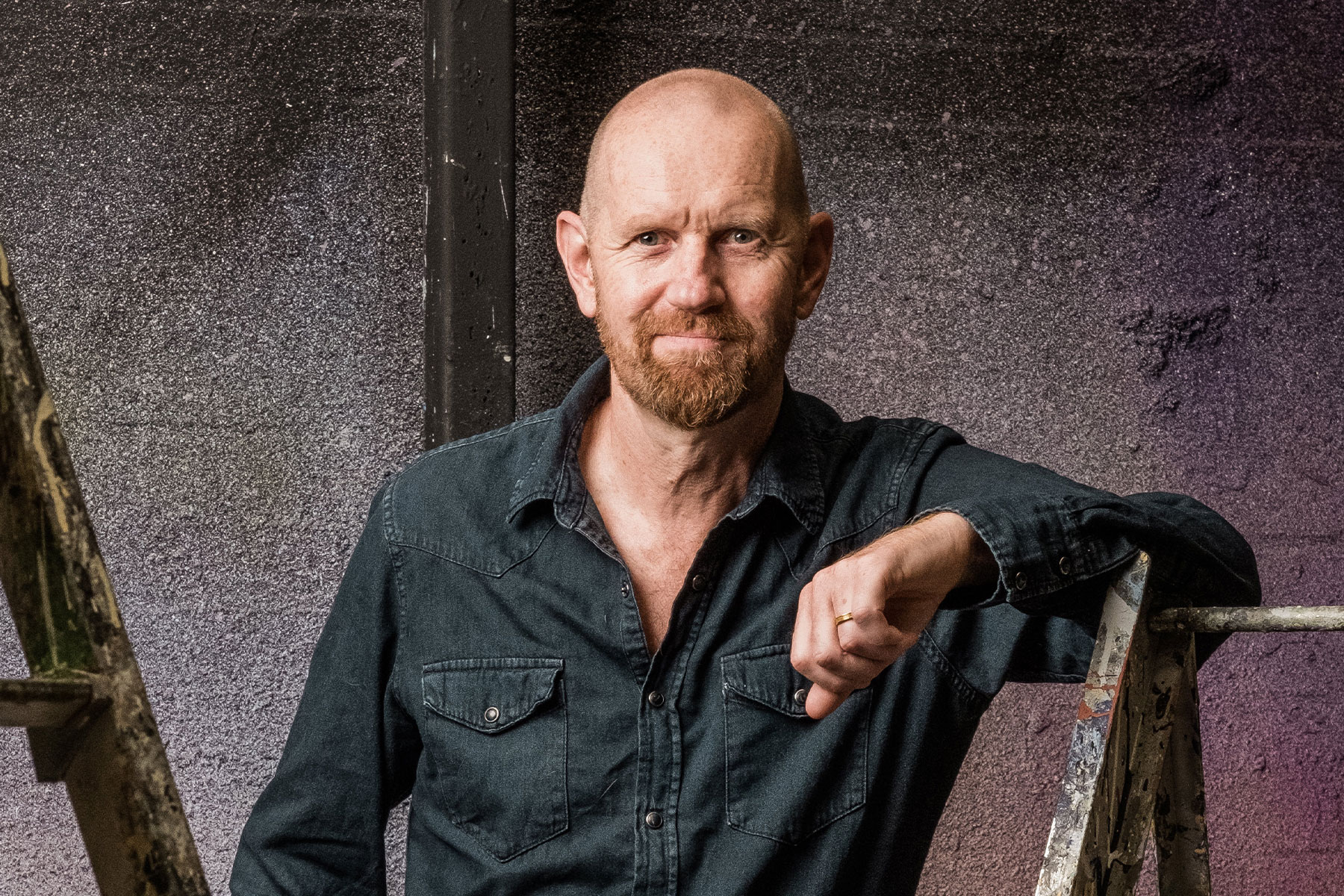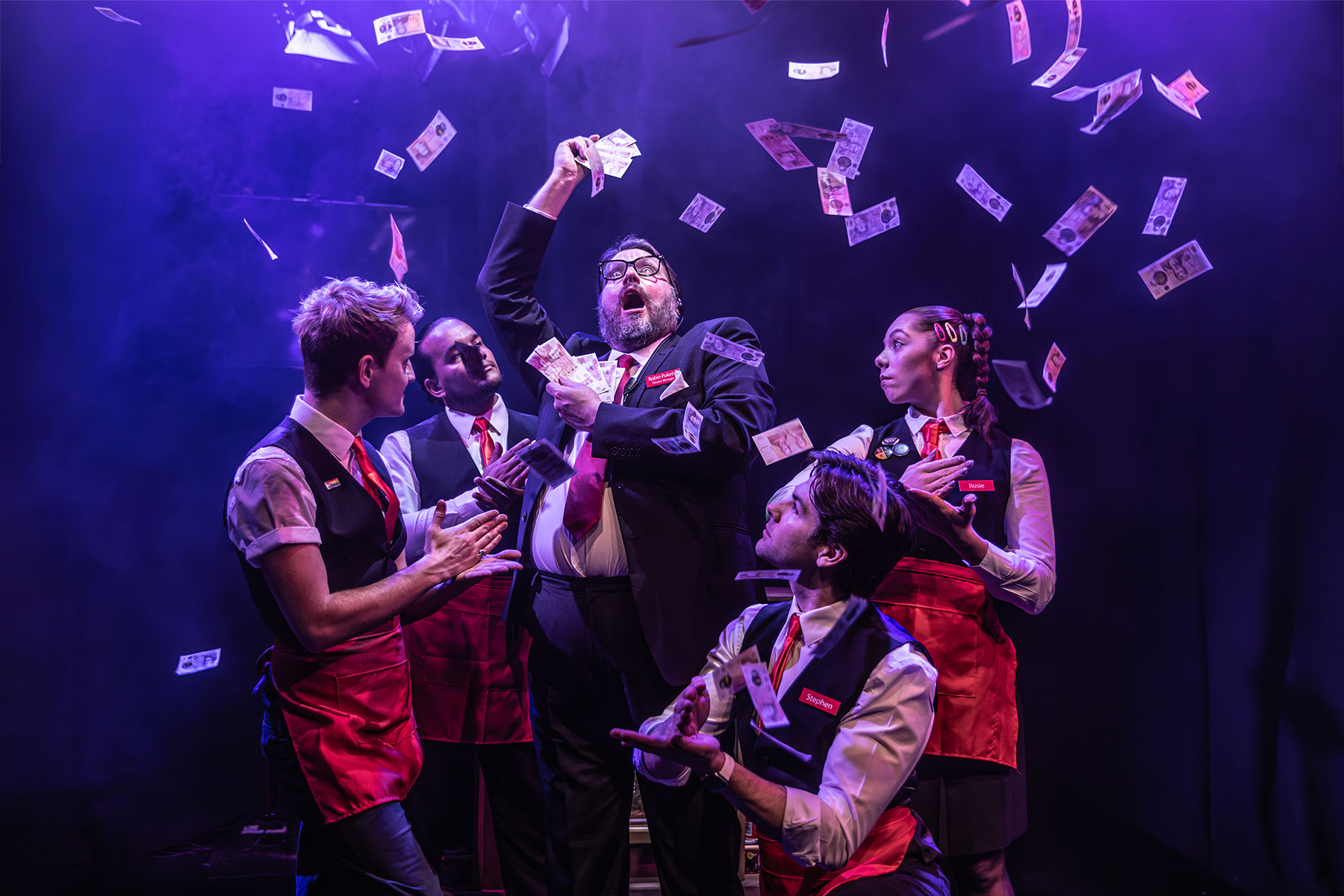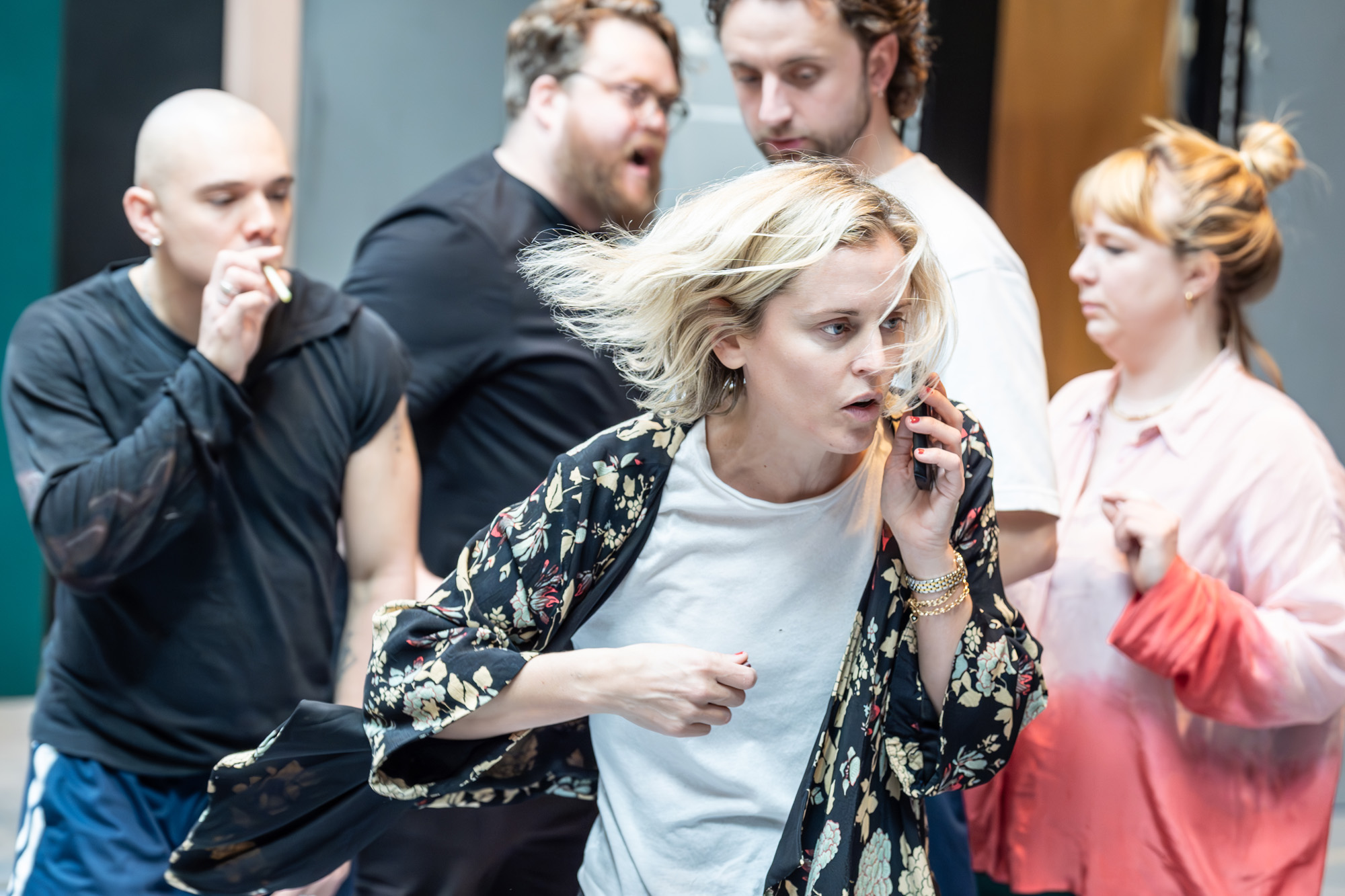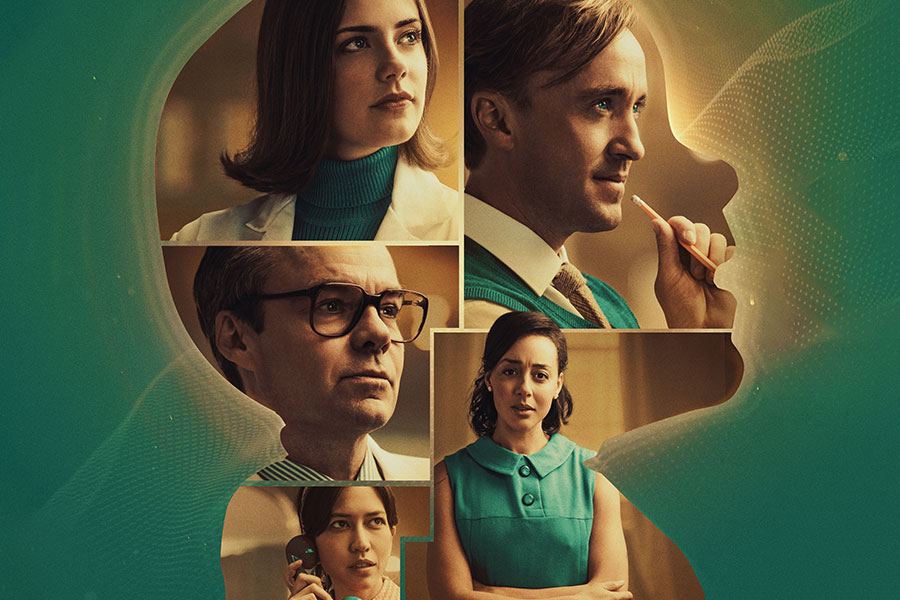After the Rainfall

© curis directive company
The Lowry
Whereas most playwrights offer opinions the curious directive company concentrate on communicating ideas. Their objective does, however, sound worrying ponderous: making innovative theatre which peers through the lens of science.
It brings to mind the type of worthy productions that used to be staged in school to try and stimulate bored pupils. Actually, After the Rainfall is presented with such swaggering imagination that it could only be staged in a theatre.
The play is structured around key ‘ Royal’ events – the crowning of Queen Elizabeth in 1952, the release of The Smith’s Album “The Queen is Dead” (bit tenuous that link) in 1986, the Jubilee in 2012 and the Queen’s death in 2023.
In 2023 John’s (Gareth Taylor) book on ant communication (and how they cope with the loss of their queen) becomes the focal point for social unrest in the UK and abroad. By coincidence (told you the link was weak) he buys a derelict youth centre featuring a sculpture based on ant colonies and commemorating the 1986 miners’ strike.
His book references a 2012 protest movement to make comparison between ant communication by pheromones and human by the internet and even slogans on tee-shirts and graffiti. At the time of the book’s publication a discovery has been made near Suez suggesting shady goings-on at the end of the British colonisation.
The play is a collaboration between the six cast members and more than half a dozen other people. Inevitably with so many different visions involved the play has the odd awkward moment where the need to explain a connection results in some dodgy dialogue. But the direction by Jack Lowe is so inspired that these are easily overlooked.
Lowe utilises a wide range of techniques to ensure not just a stimulating production but also a fast-moving one. Parts of Georgia Lowe’s set swing out to form backdrops to television studios or become transparent to offer a glimpse of lost miners.
Filmed images and digitised dates appear on the walls to set the time and place for the events and to illustrate the network of ant tunnels. The opening sequence of events is so breathless as to make you worry that style might be given precedence over substance but the play soon settles down to explore the fascinating concepts.
The cast are required to portray ideas rather than characters. The potential alienating effect of this approach is offset to an extent by Colette Tchancho’s diffident yet flinty portrayal of Rashida and Karina Sugden’s life-affirming Clare.
Admirably Gareth Taylor allows John to come across as unsympathetic – more Erich von Däniken than Stephen Hawking. But the success of the play is largely due to the willingness of the cast to put aside their individual personalities and become anonymous figures adopting the stylised movements required to convey the complex ideas and story in a demanding but highly rewarding manner.
– Dave Cunningham










